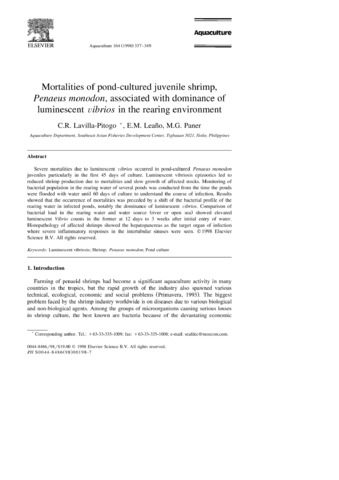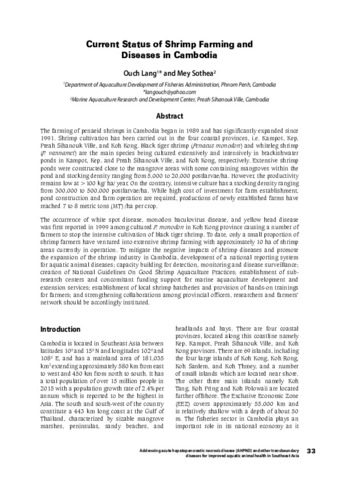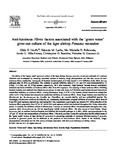Mortalities of pond-cultured juvenile shrimp, Penaeus monodon, associated with dominance of luminescent vibrios in the rearing environment
Share
Abstract
Severe mortalities due to luminescent vibrios occurred in pond-cultured Penaeus monodon juveniles particularly in the first 45 days of culture. Luminescent vibriosis epizootics led to reduced shrimp production due to mortalities and slow growth of affected stocks. Monitoring of bacterial population in the rearing water of several ponds was conducted from the time the ponds were flooded with water until 60 days of culture to understand the course of infection. Results showed that the occurrence of mortalities was preceded by a shift of the bacterial profile of the rearing water in infected ponds, notably the dominance of luminescent vibrios. Comparison of bacterial load in the rearing water and water source (river or open sea) showed elevated luminescent Vibrio counts in the former at 12 days to 3 weeks after initial entry of water. Histopathology of affected shrimps showed the hepatopancreas as the target organ of infection where severe inflammatory responses in the intertubular sinuses were seen.
Suggested Citation
Lavilla-Pitogo, C. R., Leaño, E. M., & Paner, M. G. (1998). Mortalities of pond-cultured juvenile shrimp, Penaeus monodon, associated with dominance of luminescent vibrios in the rearing environment. Aquaculture , 164(1-4), 337-349. https://doi.org/10.1016/S0044-8486(98)00198-7
Subject
Taxonomic term
Collections
- AQD Journal Articles [1249]
Related items
Showing items related by title, author, creator and subject.
-
Current status of shrimp farming and diseases in Cambodia
Lang, Ouch; Sothea, Mey (Aquaculture Department, Southeast Asian Fisheries Development Center, 2016)The farming of penaeid shrimps in Cambodia began in 1989 and has significantly expanded since 1991. Shrimp cultivation has been carried out in the four coastal provinces, i.e. Kampot, Kep, Preah Sihanouk Ville, and Koh ... -
Luminescent vibrios associated with mortality in pond-cultured shrimp penaeus monodon in the Philippines: Species composition
de la Peña, Leobert D.; Lavilla-Pitogo, Celia R.; Paner, Milagros G. (Japanese Society of Fish Pathology, 2001)Heavy mortalities due to luminescent vibriosis have been observed among pond-cultured Penaeus monodon shrimp in the Philippines. The species composition of luminescent Vibrio associated with mortalities was determined. A ... -
Anti-luminous Vibrio factors associated with the ‘green water’ grow-out culture of the tiger shrimp Penaeus monodon
Lio-Po, Gilda D.; Leaño, Eduardo M.; Peñaranda, Ma. Michelle D.; Villa-Franco, Annie U.; Sombito, Christopher D.; Guanzon, Nicholas G., Jr. (Elsevier, 2005)The ability of the “green water” grow-out culture of the tiger shrimp Penaeus monodon to prevent outbreaks of Luminous Vibriosis was investigated by screening associated isolates of bacteria, fungi, phytoplankton and fish ...




